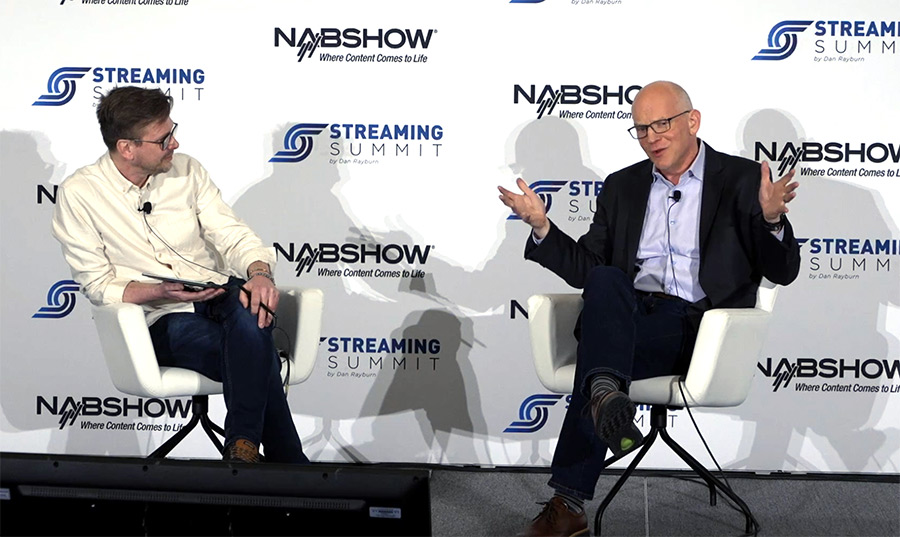Any broadcaster looking to build a core streaming service needs to understand their brand and consider how they want to present themselves to consumers. They have to address whether to carry on the core brand or to adopt a new franchise name. Will they produce their own content? Will they deploy episodic content? These are just a few of the considerations that will determine how a streaming player puts together its service strategy, build its fanbase and deliver an engaging experience.
Once these aspects are in place, the challenge then moves towards monetization, as I discussed in the first part of this blog. The broadcaster needs to understand whether they are delivering a service to replace the traditional linear broadcast or position it as supplementary content or ‘free-to-air.’ These factors will all determine the future monetization strategy. Then it comes down to the content itself. Will it repeat content from a live channel? Will there be a base of channels with additional on-demand content packaged on top? There are many big considerations to be had in the streaming space. But perhaps the most fundamental is around achieving broadcast-level quality delivery and lower latency.
The core tenets of streaming: Quality, stability, reliability, and scale
Regardless of the context, all broadcasters are defined by quality – user experience, picture or delivery. But when we think about the number of new entrants in the streaming space, the delivery side of broadcast-quality level content has sometimes been taken for granted. As linear content takes a bigger stranglehold of this market, this will become an ever-increasing challenge. Just last month, Showtime and the Fanmio Boxing app struggled to handle the demand in the US to stream its PPV boxing event involving Floyd Mayweather and Logan Paul. I saw a great quote from Miheer Walavalkar, CEO, LiveLike (via SportsPro Media’s Nick Meacham) which best summarises the current situation: “Everyone is investing in creating better content, yet no one is really investing in a better experience.”
If there ever was a consumer tolerance towards streaming delivery challenges, that’s starting to shift. Streaming is no longer regarded as an add-on service – they expect as close to the five-nines level as possible. And as it increasingly becomes their primary method of consuming content, they will require a platform service that offers the same level of stability and trust they had in the quality of the traditional broadcast service. In other words – the best possible picture quality with minimal latency and disruption.
Once the consumer has that level of trust, the advertisers will follow and become more relevant in this space. Around 20 years ago, the average ad paid significant dollars to be delivered during breaks in peak linear content. So, while the streaming ecosystem is on a huge technology curve, quality across all levels of the value chain has to continue to match that growth and change. For any broadcaster who is serious about shifting its business revenue towards digital streaming, the core tenets of quality, stability, reliability, and scale will dictate their chances of success.
The importance of the SaaS-based model
And that’s why the Software-as-a-Service (SaaS) model will be so crucial for streaming live events in the future. At its most basic level, it provides the operator with the chance to only pay for the cloud-based technologies they use and align it with the growth of their subscriber base. This can prove to be a more predictable model for new entrants in the streaming market. But with event-based programming, there is a specific use case to the live channel stream. The SaaS model means you simply do not need to maintain and keep the channel working 365 days a year. You can react to live news events – and spin up dedicated channels to help support the reporting of an unexpected development.
But SaaS models aren’t just about scaling the channel for live delivery – it’s also about scaling in terms of the number of consumers and reach. They are the most significant variables of all. For content originators to make bigger waves in the streaming space, they need to bring several different pieces of functionality to the table via the cloud. We may well see an evolution of the cloud environment reminiscent of the shift towards the content delivery network (CDN) a decade ago. It may not be as rapid – simply because the functionality and value are much deeper in the cloud. But the ability to choose how to access the service, having the flexibility to perform tasks in multiple clouds and on-prem will only evolve further. My colleague Tony Jones, Principal Technologist, details the value of the SaaS-driven model in this blog post.
MediaKind’s commitment to the SaaS-based model
Throughout this year, we will be discussing how MediaKind is investing in and providing these kinds of opportunities and options to our customers and partners. We are committed to investing in technology to enable them to play in the streaming space and help them realign with the evolving challenges they face against their competition.
These investments will enable us to help solve some of the most challenging issues in the streaming space – whether its increasing reach, engagement, improving monetization, moving to the cloud, increasing agility – or simply reducing overhead costs. While MediaKind has always delivered best-in-class TV products and services, the evolution of our product portfolio embraces cloud-native and hybrid models. SaaS offerings will be pivotal to enabling this future. As we move forward, we want all content owners, rights-holders, and originators to be able to deliver world-class streaming experiences as quickly as turning on the faucet and having the video spurt out on-demand.
To read the first part of Erik Ramberg’s blog, which looks at the advertising opportunities in the streaming space, click here.



